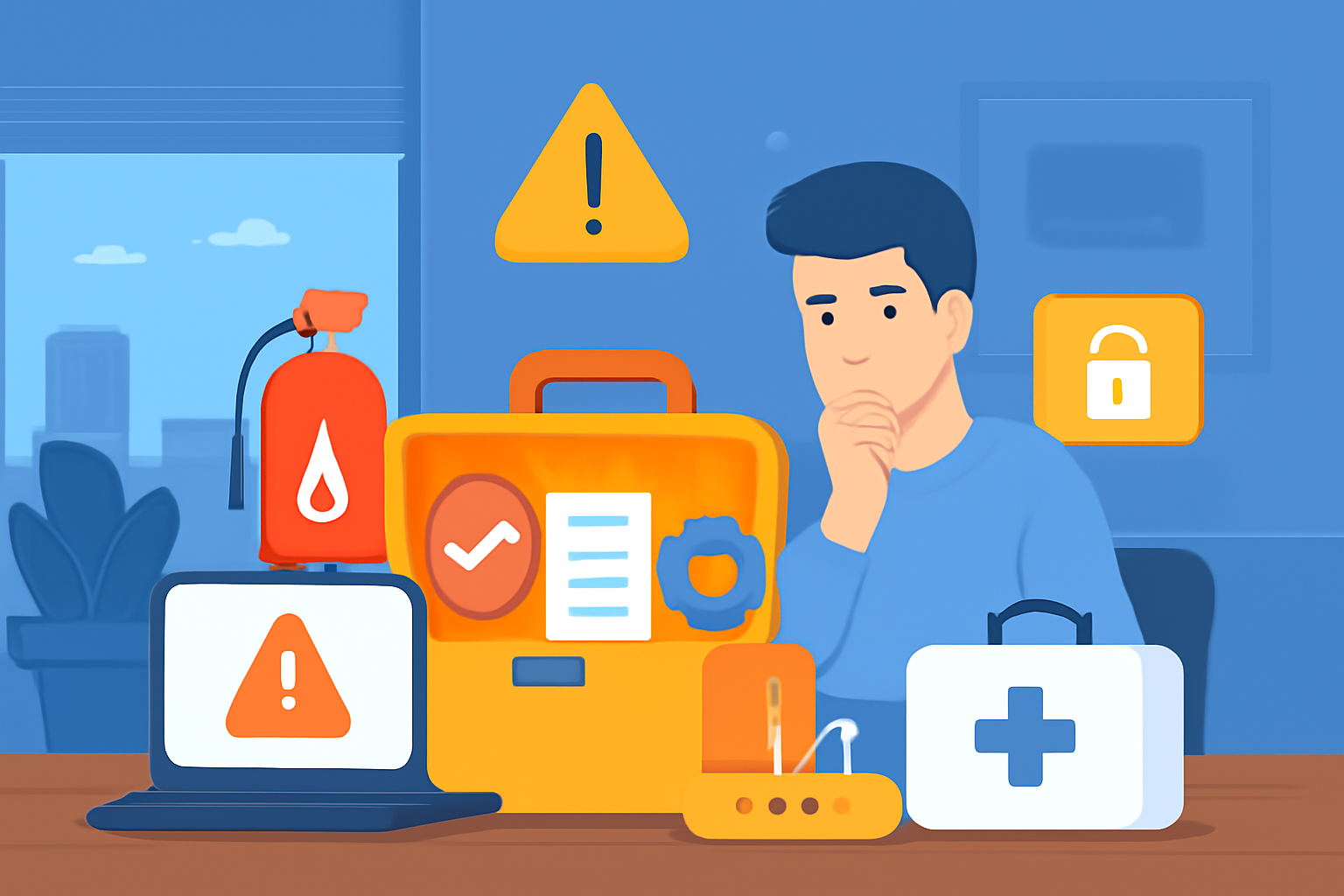The IT Emergency Toolkit: What Every Business Should Have Ready

In today’s digital world, your business relies on technology to run smoothly, until it doesn’t. IT emergencies can strike without warning, and when they do, you’ll want to be prepared. Whether it’s a network outage, a security breach, or something more sinister, having an IT emergency toolkit ready is crucial for minimising downtime, protecting your business, and keeping your sanity intact.
But don’t worry, we’ve got your back. Here’s what every business should include in their IT emergency toolkit.
1. A Solid Backup System
Let’s face it: data loss is every business owner’s worst nightmare. The idea of losing months or years of customer data, financial records, or that “one” file you worked on for hours is enough to make anyone break out in cold sweats.
Backup systems are non-negotiable. Make sure you’ve got both on-site and cloud-based backups. That way, if your server takes a dive, you won’t need to dive into the depths of despair with it.
Pro tip: Automate your backups. The last thing you want to do in the middle of an emergency is manually back up your files.
2. A Dedicated IT Support Line
Every minute of downtime means potential lost revenue, disgruntled customers, and a whole load of stress. This is where IT support comes in. Having a direct line to a reliable IT team can be the difference between a minor hiccup and a full-blown catastrophe.
Make sure you’ve got someone on speed dial, preferably not your mate who “sorts out computers” but a professional IT support service. A good IT support team can help diagnose and resolve issues remotely, saving you time and money.
3. Cybersecurity Tools (because cybercriminals don’t sleep)
Let’s get one thing straight, cybersecurity is not optional. Whether you’re running a small business or a multi-million-pound enterprise, hackers love to target anything that’s connected to the internet. And trust us, they’ve got all day to find vulnerabilities.
Your IT emergency toolkit should include:
- Firewalls: Your first line of defence.
- Antivirus & Anti-Malware Software: Protects against sneaky software that tries to steal your data.
- Encryption Tools: Secure sensitive data, especially when communicating over networks.
- Two-Factor Authentication (2FA): Because usernames and passwords are so 2010.
And remember, updates are your friend. Keep all your software up to date, and your emergency toolkit will be one step ahead of any potential attacks.
4. A Network Monitoring System (for the peace of mind)
A network monitoring system is like having a security camera for your business’s IT infrastructure. It continuously checks for issues such as network performance dips, downtime, or bandwidth overloads. Having this system in place can alert you to issues before they become full-blown emergencies.
Think of it as a smoke detector, but for your network, without the annoying beeping when you burn the toast.
5. A Disaster Recovery Plan (because stuff happens)
Even with the best preparations, things can still go wrong. That’s why you need a disaster recovery plan (DRP). This plan outlines the steps to take in the event of a catastrophic IT failure, from restoring backups to communicating with clients.
A solid DRP will help ensure that your business can recover quickly, keeping everything from productivity to reputation intact. And if you’re still using an old-school Excel sheet for this? It’s time to upgrade.
6. Communication Tools (for when it all goes south)
In the middle of an IT emergency, communication is key. Whether it’s alerting your team to the issue or keeping your clients updated on progress, communication tools ensure that everyone is on the same page.
Consider using services like Slack or Microsoft Teams for internal communication and make sure you have templates or pre-written messages ready to inform customers of any service interruptions. Because let’s face it, no one likes reading an apology email that looks like it was written on the back of a napkin.
7. A Well-Documented IT Inventory
An often-overlooked tool in the IT emergency kit is the IT inventory. Keeping a record of all hardware, software, licences, and network components allows you to quickly identify what’s affected during an emergency. It’s like a first-aid kit for your IT systems, you’ll be able to see exactly what needs fixing.
Ensure that all devices and assets are clearly labelled and updated regularly. It saves time and reduces errors when troubleshooting.
8. Remote Access Tools (because you’re not always at the office)
Sometimes, the worst IT emergencies happen when you’re not even at the office. That’s why remote access tools are a must-have. Tools like VPNs and remote desktop software let your IT team access your systems and fix problems, even when they’re sitting at home in their pyjamas.
Plus, it’ll help you avoid those awkward “I’m on my way in, just hold tight!” moments while you’re stuck in traffic.
9. A Digital First-Aid Kit for Quick Fixes
For those “oh no” moments when your screen freezes, your printer jams, or the Wi-Fi goes down at the worst possible time, having a digital first-aid kit can save you.
What’s in it? Tools like:
- Password recovery tools (because let’s face it, we all forget passwords).
- System restore discs or USB drives (it’s like a magic wand for your computer).
- Quick troubleshooting guides (keep a cheat sheet on your desk to fix those little issues that always pop up).
Conclusion: Be Prepared, Stay Safe
IT emergencies are inevitable, but with the right tools, you can tackle any challenge that comes your way. By having a well-equipped IT emergency toolkit, you’ll be ready to respond quickly, minimise downtime, and ensure your business stays operational, no matter what.
Remember: an ounce of prevention is worth a ton of IT stress. So, get ahead of the game, and build your IT toolkit today. Because when disaster strikes, you’ll want to be the calm one in the room, not the one frantically Googling “How to fix a network outage”.
